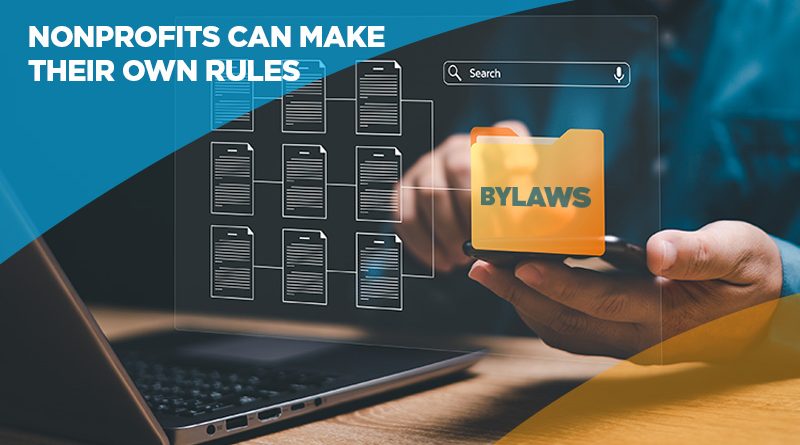How to Write a Super Set of Nonprofit Bylaws: Part 1
When it comes to your nonprofit, there’s always so much to do! And if you’re thinking about starting a new nonprofit, there’s even more. That’s why, here at GrantWatch, we try to help our readers navigate the process as much as possible. Today, and over the next three weeks, we will dive into an incredibly essential topic: nonprofit bylaws. Nonprofit bylaws are essentially a rulebook for how a nonprofit organization operates. Specifically, as it relates to governance of the organization. This will include several elements, but they act as formal papers for all the rules, regulations, and operating procedures under which a nonprofit will operate.
Beyond being a guidebook for the organization itself, nonprofit bylaws also hold legal significance. The IRS requires that any nonprofit bylaws that have been adopted be included in Form 1023, which is the application for a nonprofit to be awarded 501(c)(3) or tax-exempt status. Additionally, because nonprofits are incorporated on a state level, states may have legal requirements. Additionally, much of what is included in these documents is essential to your application to become a recognized nonprofit, so preparing early on is beneficial.
Over the next few weeks, we’ll share everything you need to know about these bylaws. This week, it’s all about the fundamentals and drafting o super set of nonprofit bylaws. We hope this helps you on your journey!
Fundamentals & Foundations:
So, to begin with, what are nonprofit bylaws? As we’ve said, this is your guidebook to running your nonprofit organization, and it should be incredibly comprehensive. Beyond the legality and state (or federal) requirements, this helps your organization in terms of personnel, a focus on the overall mission, and in serving the communities you’re focused on. And it helps an organization to overall fulfill its mission laid out in their charter.
Here is an overview of some of the procedures and guidelines that may be laid out in your nonprofit bylaws:
- Duties and roles of directors or any officers within the organization.
- Election procedures for board members.
- Structure of membership for the organization.
- Any conflict of interest policies or procedures.
- Requirements for quorum (minimum amount of board members required to vote).
Drafting your Nonprofit Bylaws:
At this point, you’re probably wondering, where do we start? There’s lots of information you’ll need to gather and discuss on the outset of this process. Before we get there, though, we need a team huddle. Your team is going to play a large part in this, starting with your board members, so let’s start there. There’s going to be a couple of steps here.
First, assemble a drafting committee: these are going to be the people who help to set the stage for your organization’s guidelines and procedures. And when choosing these decision-makers there’s a couple of things to keep in mind.
- Careful selection: You want people on this committee who are incredibly knowledgeable about your organization’s mission and objectives.
- Diversity and inclusion: Make sure to include a wide array of stakeholders from within the organization to ensure proper representation.
- Clearly Defined Roles and Responsibilities: This is essential in ensuring everyone knows what they’re doing. Have a chairperson for this committee and have every member be assigned clearly articulated responsibilities so there’s limited confusion.
Other elements of this drafting process must include a clear understanding of any and all legal ramifications for the organization. This can mean consulting legal advice, understanding laws and regulations relevant to your specific organization (state and federal, and even possibly consulting similar organizations’ bylaws for ideas. To the last point, this should only be for inspiration, do not copy terms or regulations verbatim.
For the last part of the drafting process, we’re going to include a basic list of what needs to be included.
Key Components: What needs to be included?
Here’s a quick list of some of the basics of what needs to be included in your bylaws documents:
- Your organization’s name
- Organization purpose (statement of purpose will be important here)
- Board of directors
- Meeting notes
- Prospective committees
- Officer list
- Membership
- Conflict of interest policy
- Fiscal year
- Amendment and dissolution procedures
Final Thoughts:
To conclude, we’ve discussed some of the fundamentals for your nonprofit’s bylaws. Stay tuned for the next installment when we dive into the details! We’ll talk all about detailed bylaws components, specifics of governance structure for nonprofits, and more!
About GrantWatch
With close to 8,000 grants currently available, GrantWatch.com is the leading grant listing directory. Upgrade to a MemberPlus+ subscription to view the full grant details, including eligibility criteria and application information. For more information, you can also visit the GrantWatch FAQ page. To see the great value of all 20 of the top GrantWatch features, click here.

